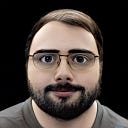What are Materials in Unity?
“The standard shader presents you with a list of material parameters.
These parameters vary slightly depending on whether you have chosen to work in the Metallic workflow mode or the Specular workflow mode.
Most of the parameters are the same across both modes, and this page covers all the parameters for both modes.
These parameters can be used together to recreate the look of almost any real-world surface.”
Basically, materials are what make all game objects look like something more than blank, grey colored objects in a game scene.
They are the basically template or blueprint of images that are fed into the game engine’s shader to flesh out game objects, whether they are people, trees, vehicles, rocks, or whatever!
In unity the Material component in the Inspector window has the following options:
Albedo
“The Albedo parameter controls the base color of the surface.”
This can either be defined with an image file or with a color from the color-picker. We will be doing the latter today.
This is the main image or color that will define any game object it is applied to.
Specular or Metallic
“Specular effects are essentially the direct reflections of light sources in your Scene…”
“…the reflectivity and light response of the surface are modified by the Metallic level and the Smoothness level.”
Whether you choose Specular or Metallic for a given material will depend on your preference, taste, and the game object in question.
Obviously objects that are metallic in nature will generally benefit from choosing metallic.
Normal Map
“Normal maps are a type of Bump Map.
They are a special kind of texture that allow you to add surface detail such as bumps, grooves, and scratches to a model which catch the light as if they are represented by real geometry.”
Normal maps are one of the reasons a three dimensional object in a game with a two dimensional picture applied to it does not appear flat.
A separate image based on the Albedo image, but using a different and specific color schema informs the game engine where to add additional shadowing effects to give the object more depth.
This does have limitations however which brings us to the next material property, “Height Map”.
Height Map
“Height mapping (also known as parallax mapping) is a similar concept to normal mapping, however this technique is more complex — and therefore also more performance-expensive.
Heightmaps are usually used in conjunction with normal maps…”
“…parallax height mapping goes a step further and actually shifts the areas of the visible surface texture around, to achieve a kind of surface-level occlusion effect.
This means that apparent bumps will have their near side (facing the camera) expanded and exaggerated, and their far side (facing away from the camera) will be reduced and seem to be occluded from view.”
The first image is of the game object without a normal or height map. The second with a normal map, and the third with both a normal and height map.
As you can see, where performance constraints allow, the ideal visual effect is achieved using both a normal map and height map.
However, you can achieve a reasonable result for lower-performance devices with just a normal map.
Occlusion Map
“The occlusion map is used to provide information about which areas of the model should receive high or low indirect lighting.
Indirect lighting comes from ambient lighting and reflections…”
This material property further enhances shadowing beyond normal and height maps by taking into account indirect lighting.
Essentially this will lighten or deepen the darkness of shadows where relevant to do so on the game object and reduce instances where environmental light or reflections would show up inappropriately on an object.
Emission Map
“The Material emission properties control the color and intensity of light that the surface of a Material emits.”
Pretty self-explanatory, emission refers to light emission that should be produced from the object, or areas of the object itself rather than the environment around it.
You might have a vehicle with head or tail lights for instance that is entirely one material.
You would not want the entire vehicle to emit light, but you would want specific areas where the head lights and tail lights are, and you’d want those lights to emit the appropriate colors.
The emission map specifies this.
Secondary / Detail Maps
“Secondary Maps (or Detail maps) allow you to overlay a second set of textures on top of the main textures listed above.”
“The reason for this is to allow the material to have sharp detail when viewed up close, while also having a normal level of detail
when viewed from further away, without having to use a single extremely high texture map to achieve both goals.”
Secondary, or Detail, maps are generally unnecessary but can be advantageous or even required in some circumstances.
The skin pores of a person being rendered up close is the example given on Unity’s documentation website, linked above.
